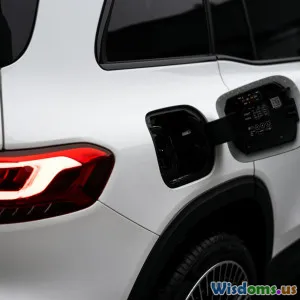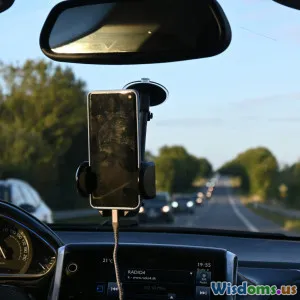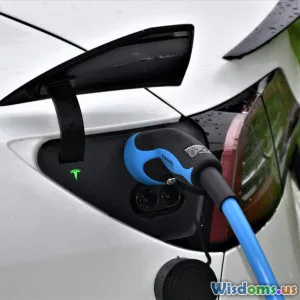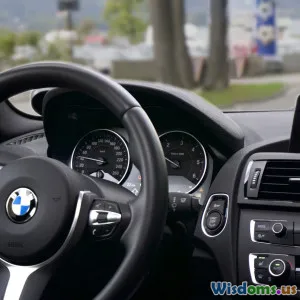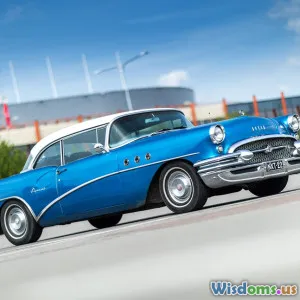
How to Retrofit Old Cars With Level 1 Automation
10 min read An in-depth guide on retrofitting Level 1 automation into older vehicles, boosting safety and convenience without full rebuilds. (0 Reviews)
How to Retrofit Old Cars With Level 1 Automation
Introduction
Classic cars hold a special place in the hearts of enthusiasts worldwide. However, these older models often lack the modern safety features and conveniences we have come to rely upon in today's highly automated vehicles. What if you could marry the charm and craftsmanship of a vintage car with the intelligence of modern automation? Retrofitting Level 1 automation—basic driver assistance features—into old cars offers this innovative blend of nostalgia and technology. From adaptive cruise control to lane keeping assist, these upgrades bring tangible safety and convenience without a full vehicle replacement.
In this comprehensive guide, we delve into the practical steps, technology choices, and real-world applications to empower you to give your old car a smart upgrade.
Understanding Level 1 Automation
Before diving into retrofitting, it’s important to understand what Level 1 automation entails. According to SAE International’s autonomy scale, Level 1 represents driver assistance, where the system takes over one primary function such as steering or acceleration/braking, but the human driver remains fully responsible for monitoring driving conditions.
Common Level 1 features include:
- Adaptive Cruise Control (ACC)
- Lane Keeping Assistance (LKA)
- Automatic Emergency Braking (AEB) assistance
Retrofitting these functions can significantly reduce driver fatigue and help avoid accidents, especially on highways.
Why Retrofit Old Cars?
Enhance Safety and Convenience
Older cars typically lack advanced sensors and driver aids that reduce collisions. For example, the National Highway Traffic Safety Administration (NHTSA) reports that rear-end collisions—often avoidable with ACC and AEB—constitute nearly 23% of all crashes in the US. Adding automated braking and distance control can greatly lower these incidents.
Cost Efficiency
Buying a brand new vehicle with factory-installed automation can cost tens of thousands. Retrofitting offers a budget-friendly way to enhance your car. Some retrofit kits cost between $1,000 and $3,000 depending on features, a fraction of a new vehicle’s price.
Environmental and Emotional Value
Retrofitting extends the life of your beloved car, reducing waste and resource use. For many, preserving the aesthetics and character of an old vehicle is priceless.
Necessary Components for Level 1 Retrofit
Sensors and Cameras
Adaptive systems depend heavily on environment perception.
- Radar Sensors: Crucial for adaptive cruise control to detect vehicles ahead and adjust speed. For example, 24 GHz short-range radar modules are commonly used.
- Cue Cameras: Often installed near rearview mirrors for lane detection and lane keeping assistance.
- Ultrasonic Sensors: Assist in low-speed object detection.
Control Modules and Actuators
- Electronic Control Unit (ECU): Central processor for automation features.
- Steering Actuator: For assisted steering functions.
- Throttle and Brake Controllers: To modulate acceleration and braking.
Human-Machine Interface (HMI)
- Dashboard indicators, alerts, or touchscreens to communicate system status.
Connectivity
- Some systems incorporate internet connectivity for OTA (over-the-air) updates or diagnostic data collection.
Step-By-Step Guide to Retrofitting
1. Evaluate Your Vehicle’s Compatibility
Not all old vehicles have the electronic infrastructure necessary.
- Is there an existing CAN bus system? Modern cars use Controller Area Network communication, but many older cars may need a retrofit gateway module.
- Check mechanical compatibility for actuators.
Classic American muscle cars or European sedans from the 1990s onward tend to be more adaptable due to early electronic system integration.
2. Select Retrofit Kits or Components
Some companies specialize in Level 1 retrofit kits:
- Comma.ai offers open-source hardware/software with “OpenPilot” functioning as adaptive cruise and lane assist on supported cars.
- Bosch and Continental provide professional-grade sensor and control modules for custom installations.
- Aftermarket suppliers offer radar/lidar kits with plug-and-play options for specific models.
Choose based on your vehicle compatibility, budget, and desired features.
3. Install Sensor Hardware
Clear line of sight is critical. For instance:
- Mount radar grills behind bumpers,
- Attach cameras near the windshield,
- Install actuators discreetly within the steering column and brake pedal assembly.
Installation often involves custom fabrication, so professional assistance is advisable.
4. Wire the Control Module
Integrate the ECU with the vehicle’s power and communication lines. This step requires expertise to avoid interfering with essential vehicle functions.
5. Calibrate and Test Systems
After hardware installation, systems require precise calibration to function safely and effectively.
- Lane keeping assistance needs accurate lane marking recognition.
- Adaptive cruise control sensors must be tuned to detect vehicle distances reliably.
Conduct extensive closed-course testing before using automation on public roads.
6. Educate the Driver
Since Level 1 requires full driver attention, understanding system alerts, limitations, and manual override procedures is crucial for safety.
Real-World Examples and Insights
Case Study: Comma.ai OpenPilot Retrofit
The startup Comma.ai pioneered an approach allowing owners of certain Honda, Toyota, and Hyundai models to retrofit ACC and LKA affordably. For around $1,000, a user installs the OpenPilot computer connected to factory sensors replacing dealer hardware.
Users report improved long-distance commute comfort and reduced fatigue. However, it demands active engagement—systems alert the driver if hands leave the wheel or conditions degrade.
Insurance Perspectives
Some insurers increasingly recognize and reward vehicles with driver aids, even retrofit systems. This evolving policy incentivizes safety through automation retrofits.
Challenges and Limitations
- Regulation Compliance: Retrofits must conform to local road safety and modification laws.
- Integration Complexity: Varying vehicle wiring and architectures make installation non-trivial.
- Feature Limitations: Level 1 automation doesn't remove driver responsibility; it's assistive, not autonomous.
Manufacturers do not universally support retrofits, so warranties and liability can complicate matters.
Future Outlook: Toward Smarter Classics
The retrofitting landscape is rapidly evolving with growing aftermarkets dedicated to automation. Emerging modular sensor packages and AI-powered software will lower technical barriers. Imagine a future where every cherished classic car can be upgraded with smart features as easily as installing an app.
Furthermore, growing interest in ethical and sustainable vehicle upgrades will drive community innovation and commercial development. Veteran car clubs working with tech firms could co-create standardized retrofit ecosystems.
Conclusion
Retrofitting Level 1 automation into old cars bridges the gap between automotive heritage and modern safety convenience. Through the systematic addition of sensors, control units, and driver interfaces, enthusiasts can enjoy the best of both worlds—timeless design and modern assistance.
While the journey requires careful vehicle assessment, technical expertise, and adherence to safety standards, the payoff is worthwhile: enhanced safety, reduced fatigue, and sustained relevance for cherished vehicles.
As technology matures and costs drop, expect Level 1 retrofits to become a mainstream route toward revitalizing older cars in a smart, sustainable fashion.
If you love your old ride but want an automation boost, this is an exciting era to start exploring retrofitting possibilities!
References
- SAE International, "Automated Driving Levels Explained," 2018
- National Highway Traffic Safety Administration (NHTSA) crash data reports, 2022
- Comma.ai official OpenPilot documentation
- Bosch automotive retrofit solutions catalog, 2023
- Insurance Institute for Highway Safety studies on driver-assist systems
This article is crafted to inform and inspire vehicle owners interested in smart upgrades. Professional consultation recommended before any retrofit installation.
Rate the Post
User Reviews
Popular Posts










